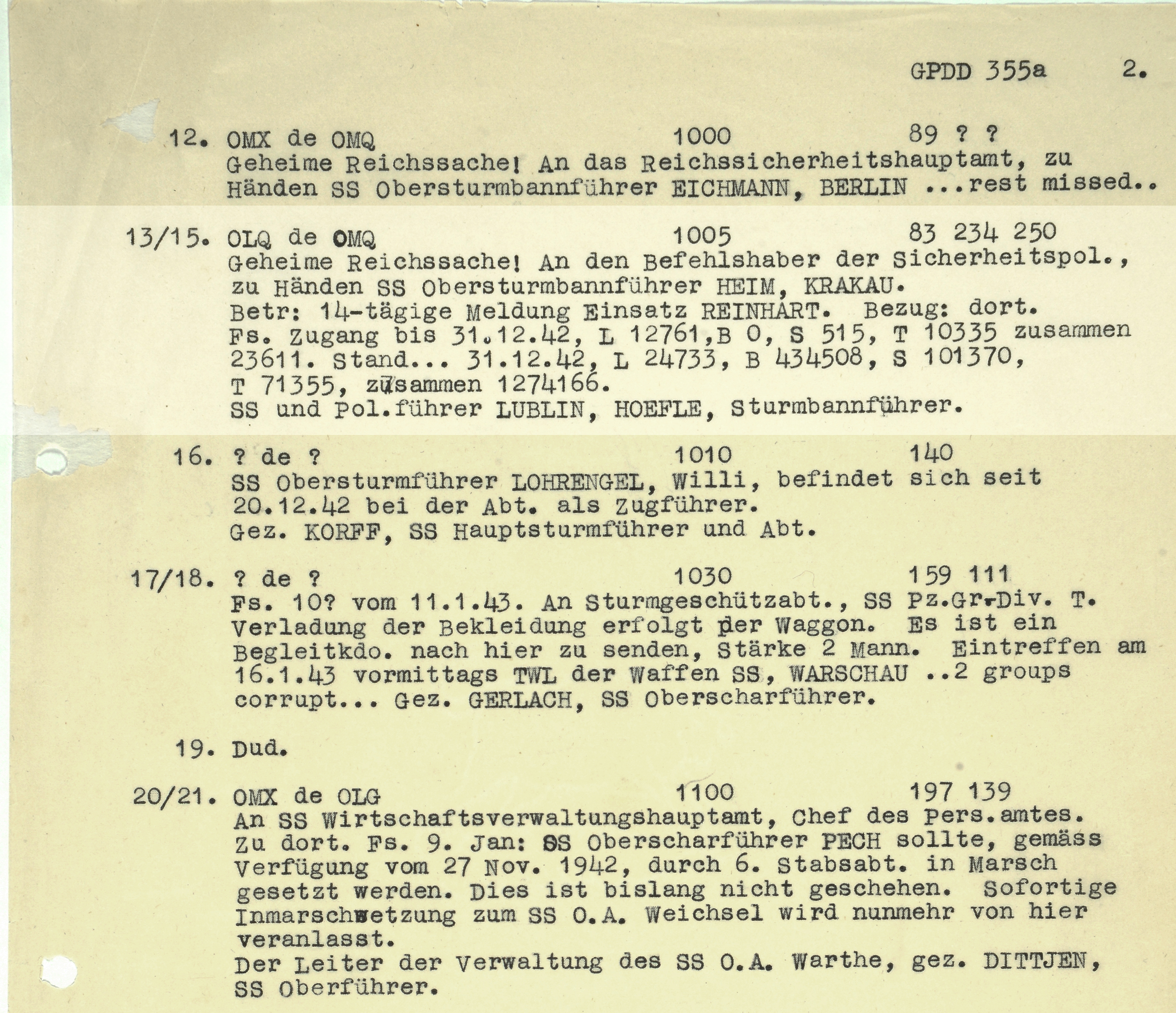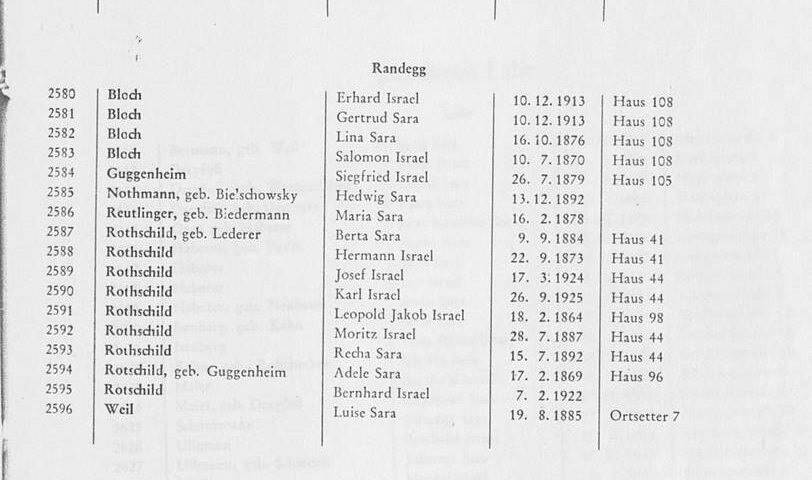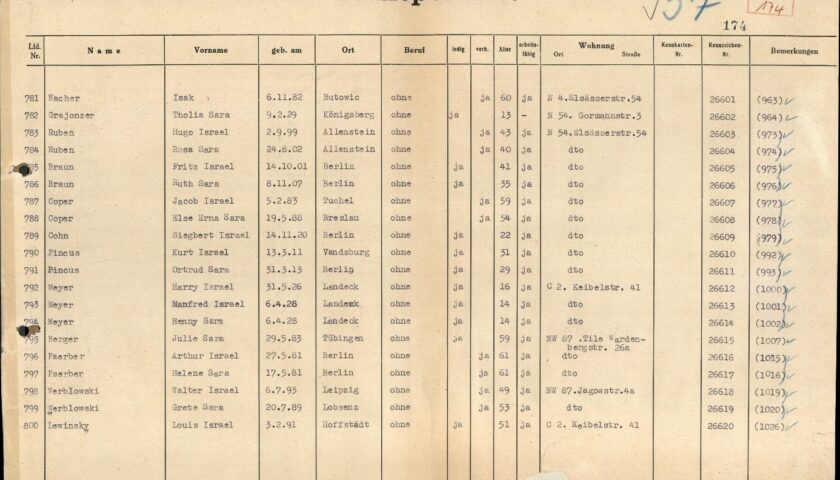British intelligence deciphered a German radio message on 15 January 1943. In it, the German police radio station in Lublin transmitted a message classified as a “secret Reich matter” to the commander of the security police in Krakow, Franz Heim, on 11 January. The sender is specified, it was the SS and Police Leader Lublin, namely Sturmbannführer Höfle. Hermann Julius Höfle (1911-1962) had the rank of SS-Sturmbannführer and as head of the main department “Aktion Reinhardt” was responsible for the coordination of this action with the civil administration of the Generalgouvernement. Höfle gave as subject “14-day message Einsatz REINHART”. This is followed by dates, letters and numbers:
“Fs. Access until 31.12.42, L 12761, B 0, S 515, together.
23611. status…. 31.12.42, L 24733, B 434508, S 101370,
T 71355 together 1274166.”
The British eavesdropping service probably did not recognise the significance of this radio call. The transcript ended up in the archives, where it remained closed to public use for half a century (Public Record Office, Kew, England, HW 16/23, GPDD 355a). The British National Archives then released the holdings in question for public use in 2000. Stephen Tyas then found the decoded transcript of the radio message and recognised its meaning. According to his and Peter Witte’s research, the letters stand for the extermination camps Lublin/Majdanek (L), Belzec (B), Sobibor (S) and Treblinka (T). According to their findings, Höfle informs them by telegraph in short form that by the end of 1942 1,274,166 Jews had been killed in the four aforementioned extermination camps of the “Einsatz Reinhart”.
The original is in the Public Record Office, Kew, England under the call number HW 16/23, GPDD 355a. Tyas published his research findings together with the historian Peter Witte: Peter Witte and Stephen Tyas: A New Document on the Deportation and Murder of Jews during “Einsatz Reinhardt” 1942, in: Holocaust and Genocide Studies, V15 N3, Winter 2001, pp 468-486 (Downloaded from https://academic.oup.com/hgs/article-abstract/15/3/468/660291 by guest on 14 May 2020).
Ev0 20200008 en




